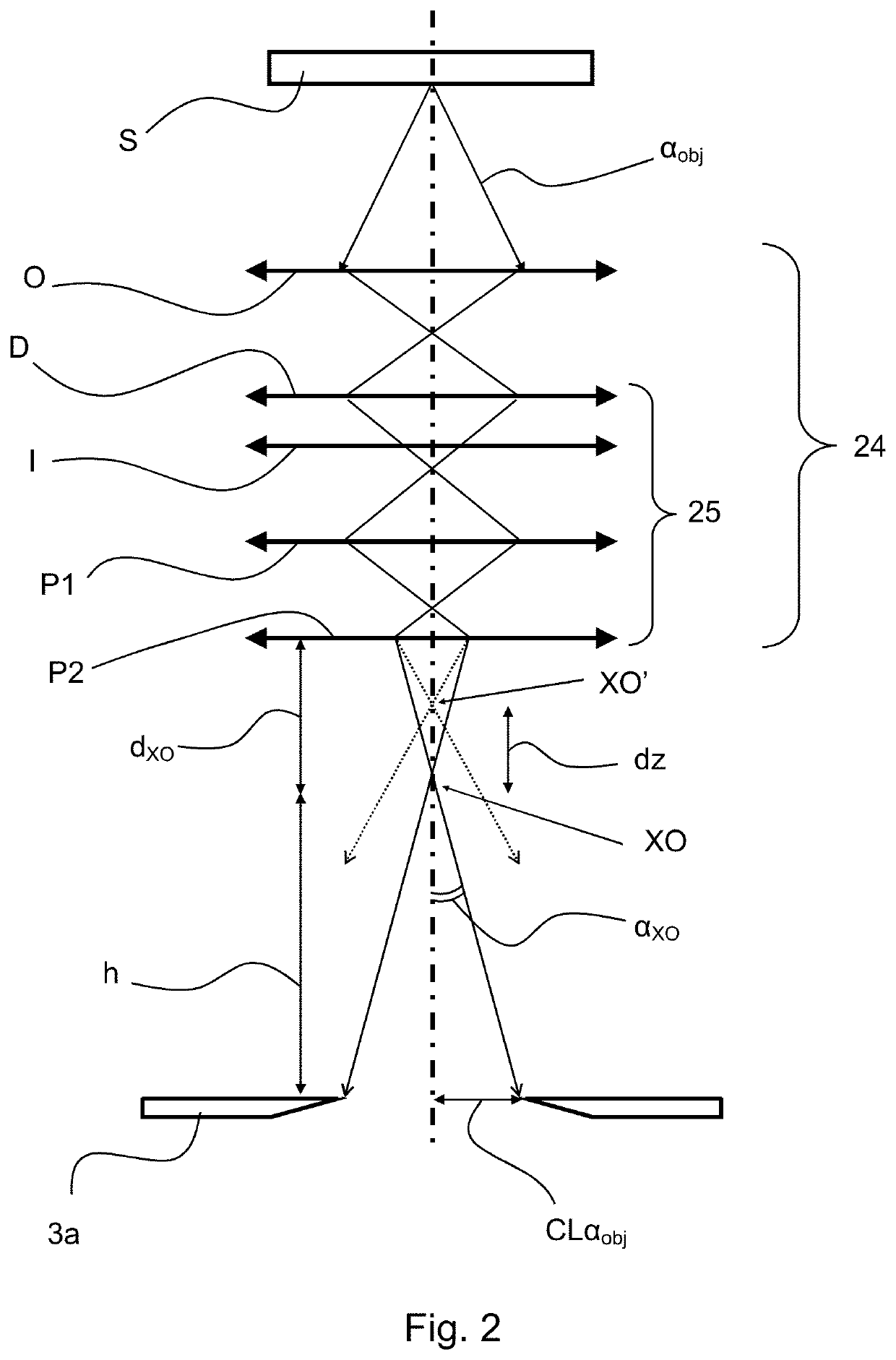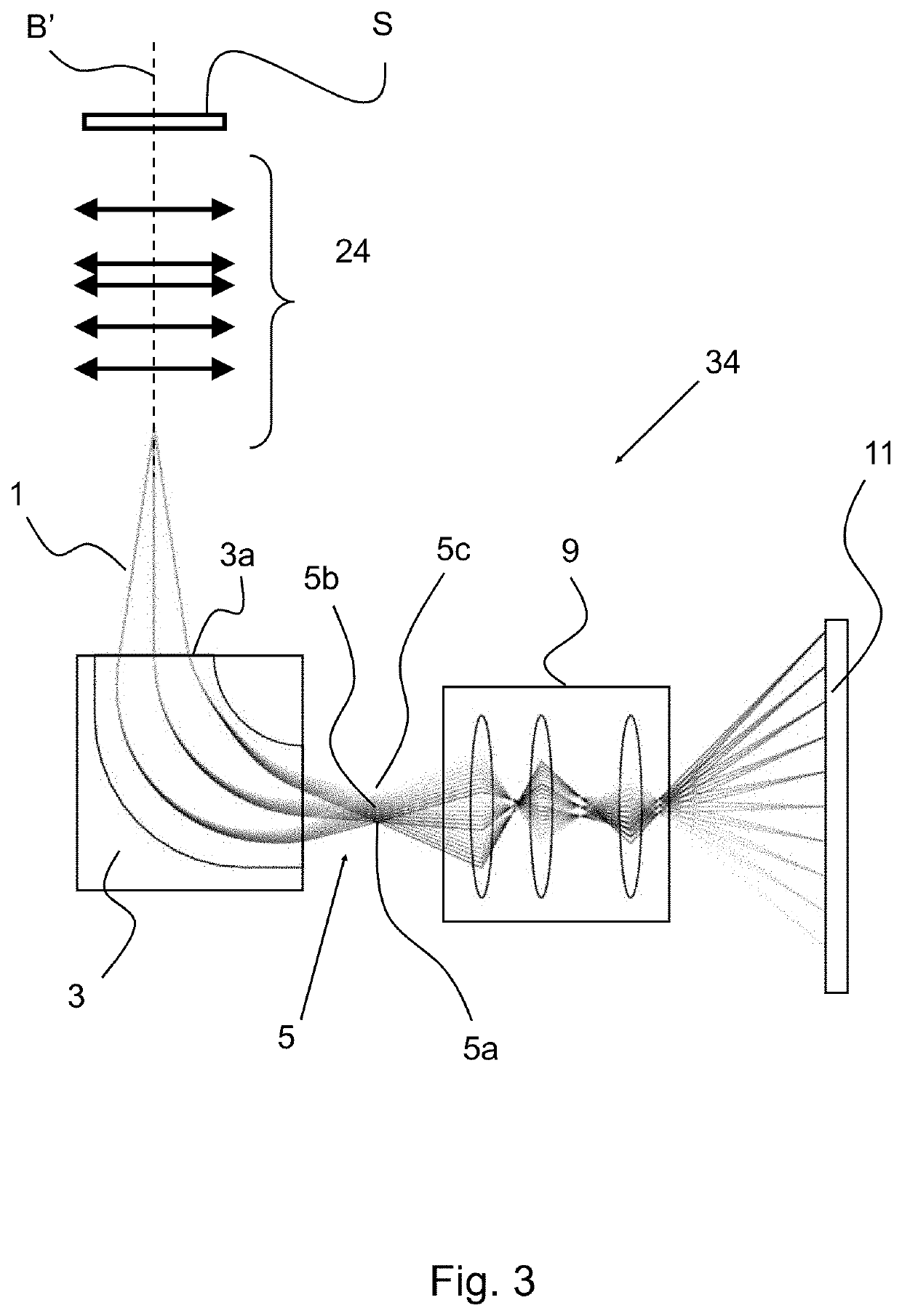Transmission charged particle microscope with an electron energy loss spectroscopy detector
a technology of electron energy loss and detector, which is applied in the direction of basic electric elements, electric discharge tubes, electrical equipment, etc., can solve the problems of reducing the spherical aberration and affecting the effect of the projecting system
- Summary
- Abstract
- Description
- Claims
- Application Information
AI Technical Summary
Benefits of technology
Problems solved by technology
Method used
Image
Examples
Embodiment Construction
[0047]FIG. 1 is a highly schematic depiction of an embodiment of a transmission charged particle microscope M, which, in this case, is a TEM / STEM (though, in the context of the present disclosure, it could just as validly be an ion-based or proton microscope, for example). In FIG. 1, within a vacuum enclosure E, an electron source 4 (such as a Schottky emitter, for example) produces a beam (B) of electrons that traverse an electron-optical illuminator 6, serving to direct / focus them onto a chosen part of a sample S (which may, for example, be (locally) thinned / planarized). This illuminator 6 has an electron-optical axis B′, and will generally comprise a variety of electrostatic / magnetic lenses, (scan) deflector(s) D, correctors (such as stigmators), etc.; typically, it can also comprise a condenser system (the whole of item 6 is sometimes referred to as “a condenser system”).
[0048]The sample S is held on a sample holder H. As here illustrated, part of this holder H (inside enclosure...
PUM
 Login to View More
Login to View More Abstract
Description
Claims
Application Information
 Login to View More
Login to View More - R&D
- Intellectual Property
- Life Sciences
- Materials
- Tech Scout
- Unparalleled Data Quality
- Higher Quality Content
- 60% Fewer Hallucinations
Browse by: Latest US Patents, China's latest patents, Technical Efficacy Thesaurus, Application Domain, Technology Topic, Popular Technical Reports.
© 2025 PatSnap. All rights reserved.Legal|Privacy policy|Modern Slavery Act Transparency Statement|Sitemap|About US| Contact US: help@patsnap.com



